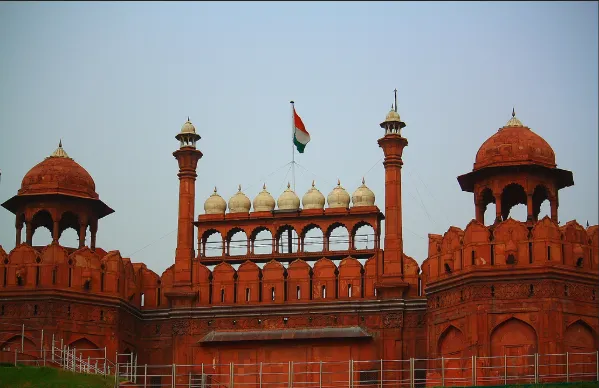At the stroke of the midnight hour, when the world dozes, India will conscious to life and flexibility… ' This memorable discourse denoted India's freedom from British control and at the same time made the Red Fort in Delhi a politically huge landmark, which presently goes about as the setting for the autonomy day festivities every year. Be that as it may, the Red Fort has been a deliberately critical landmark through the ages, because of Delhi being the capital city for a decent piece of the Mughal manage in India.
History
In 1638, the Mughal Emperor Shah Jahan moved the capital of his domain from Agra to a recently built city in Delhi that he called Shahjahanabad. Alongside the development of this new city, he established the frameworks of his castle, the Red Fort or Lal Qila. This enormous walled fortification with red sandstone dividers took about 10 years to finish. It is thought to be preferable arranged over the Agra Fort, as Shah Jahan gained from his experience pf living there. This post was the seat of the Mughal realm for around 200 years, until the point when it fell into British hands. The last Mughal Emperor Bahadur Shah Zafar was coronated here in 1837, amid which time it is said that his forces did not reach out past the limits of his castle.

Design
The design of the Red Fort is a portrayal of the social intermixing that the Mughals conveyed to India. It is the finish of the Mughal style of engineering that started with the main Emperor and that includes a combination of Persian, Timurid and Hindu conventions. Like in most Mughal fortresses, among the key rooms to visit are the Diwan-I-'Am (Hall of open crowd) and the Diwan-I-Khas (Hall ofthe private gathering of people).
The passageway to the Diwan-I-'Am has the Naubat-Khana (Drum house), from where artists played amid functions. The Diwan-I-'Am is a vast corridor with a nine curve façade. This lobby additionally has an ornamented recess where the imperial honored position would be set. The Diwan-I-Khas is said to have facilitated Shah Jahan's acclaimed peacock position of authorit, before it was taken by the Persian Nadir Shah. Different spots of note in the Red Fort are the Rang Mahal (Painted castle), the Mumtaz Mahal (which has now been changed over to a Museum), the Khas Mahal (A private house with a chamber for telling dots or Tasbih Khana, a resting chamber or Khwabgah, a robe chamber or Tosh Khana) and the Hammam (the lavishly enlivened imperial washing region, situated toward the north of the Diwan-I-Khas). Mughal engineering is celebrated for its wonderful greenery enclosures, which is the Hayat-Baksh-Bagh (nurturing garden) with its structures on account of the Red Fort.
The Red Fort complex, which comprises of Shah Jahan's royal residence and the contiguous Salimgarh stronghold worked in 1546 AD, is overseen by the Archeological Survey of India. It was pronounced a UNESCO World Heritage Site in 2007.
Reliably on the Independence day of India (15 August), the Prime Minister lifts the Indian "tricolor pennant" at the key gateway of the fortification and passes on an extensively convey talk from its bulwarks.
It was relegated an UNESCO World Heritage Site in 2007 as a noteworthy part of the Red Fort Complex.